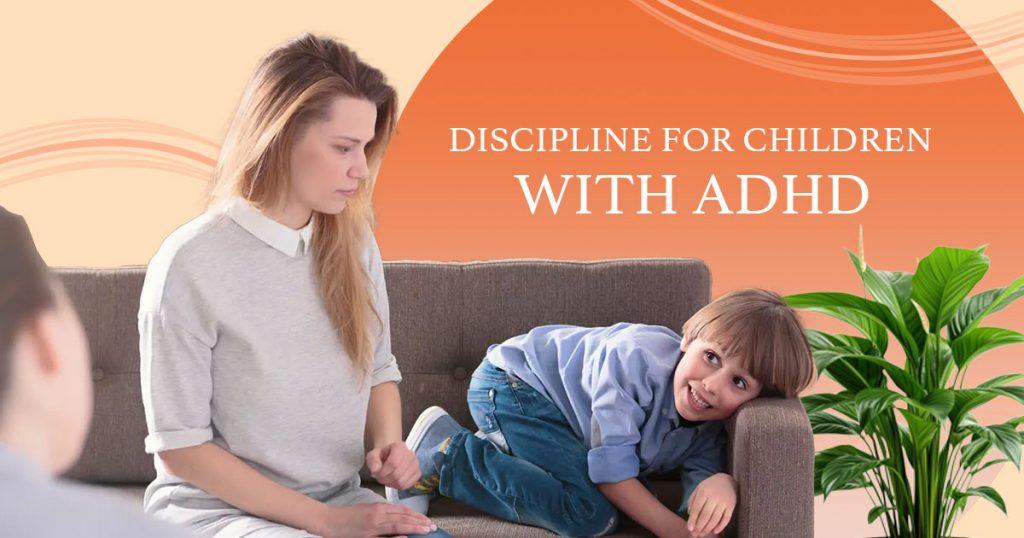Many people believe that parenting should be flawless, but in reality, it’s rarely that way, especially for first-time parents who might not have much guidance. Being a parent doesn’t come with a manual, but one thing you can count on is the natural love you have for your child. This love turns into your most trustworthy compass, guiding you through the highs and lows of parenthood. This is particularly valid if your child suffers from ADHD.
Studies have shown that parents of children with ADHD often face higher stress levels, experience less satisfaction in their parenting roles, and encounter increased rates of depression compared to parents of children without ADHD. In these situations, it is critical to rely on tolerance, understanding, and resourcefulness to establish a nurturing environment that promotes your child’s success.
Understanding ADHD in Children
Attention Deficit Hyperactivity Disorder, or ADHD, is a disorder that impacts children’s behavior and thought processes. They may find it difficult to focus, remain motionless, or maintain self-control. Here are some common symptoms of ADHD:
- Inattention: Kids with ADHD might have trouble focusing on tasks. They can get distracted easily, forget things, or find it hard to organize.
- Hyperactivity: This means they are always moving. They might fidget a lot, have trouble sitting still, or feel the need to run and climb.
- Impulsivity: They may act without thinking. This includes interrupting others, having difficulty waiting their turn, or making quick decisions without considering the outcome.
These symptoms mean that parenting a child with ADHD can be tough. Typical discipline methods might not work well, as their behavior is often more unpredictable. Because of this, parents need to use special techniques that are consistent and understanding.
Effective Strategies for Managing ADHD in Children
Although raising an ADHD child can be difficult, you can help your child develop better listening and behavior control skills by using the appropriate techniques. Here are some strategies:
- Set Clear Expectations: Let your child know exactly what is expected of them. Simplify your language and divide up the work into doable steps. For example, assist them in putting away clothes, making the bed, and gathering up toys if the objective is for them to clean their room. This approach lessens overwhelm by having your child focus on one task at a time.
- Make Use of Positive Reinforcement: Acknowledge and honor constructive actions. Provide your child with praise or small incentives, like extra playtime or a special treat, when they behave well or finish a task. For example, if they help set the dinner table, reward them with an extra bedtime story or their favorite dessert. Rewarding behavior makes them more likely to repeat it.
- Maintain a Structured Routine: Consistent routines can help children with ADHD feel more secure and less anxious. Set aside time each day for meals, homework, and bedtime. For example, a bedtime routine may involve brushing teeth, reading a story, and lights out by a specific time. Such routines minimize unpredictability and help improve behavior.
- Implement Time Management Techniques: Use tools like visual timers to keep your child on track. If mornings are hectic, set a timer for each task, such as getting dressed or eating breakfast, to help them manage their time better. This strategy can make transitions smoother and reduce stress.
- Provide Constructive Feedback: Offer immediate feedback focused on behavior, not the child. If they interrupt, gently remind them about turn-taking in conversations. Encourage role-playing to practice this skill. Constructive feedback helps children learn from their actions without feeling criticized.
- Establish a Supportive Environment: Reducing distractions at home will aid in your child’s ability to concentrate. For homework, set up a peaceful, orderly area, such as a clean desk in a quiet room. A comfortable setting can improve focus and output.
- Establish Constructive Consequences: When misbehavior occurs, apply fair consequences that teach accountability. If a chore isn’t finished, restrict privileges like screen time until completed. Ensure consequences are educational rather than punitive, focusing on learning from mistakes.
- Promote Physical Activity: Maintaining a healthy weight and sharpening focus require regular exercise. Instruct your kids to play outside, join a sports team, or take up dancing, among other enjoyable activities. Physical activity can help channel excess energy positively.
- Teach Relaxation Techniques: Introduce methods to help your child relax, such as deep breathing exercises or counting to ten during stressful moments. Relaxation techniques can be effective in managing impulsive actions.
When putting these strategies into practice, consistency and patience are essential. Involve your child in setting up routines and rules to make them feel part of the process and responsible for their actions. By creating a supportive atmosphere, you not only manage behavior but also enhance their confidence and emotional well-being. With these approaches, your child with ADHD can thrive in their daily life.
ADHD Discipline Techniques: Why They Matter
Managing a child with ADHD can be challenging, but using the right discipline techniques can make a big difference. By setting clear rules, rewarding good behavior, and keeping a steady routine, you can help your child behave better and listen more. With the help of these techniques, your child can feel safe and secure in your home. Consistency and patience are key, and while progress might be slow, every little improvement is a win.
Remember, with these techniques, you’re not just helping your child behave better—you’re also boosting their confidence and helping them grow stronger. Keep using these methods, and you’ll see positive changes over time.
